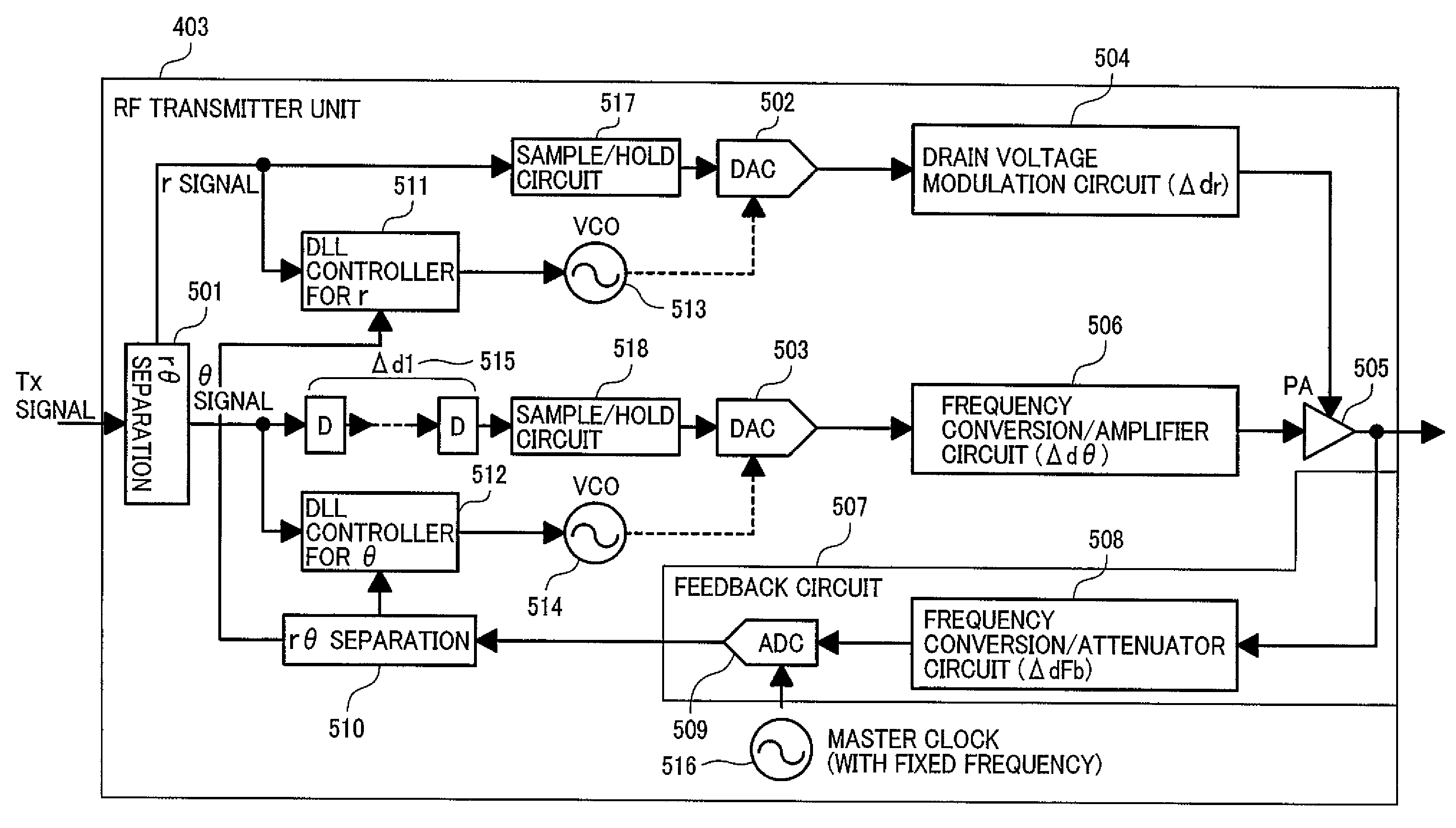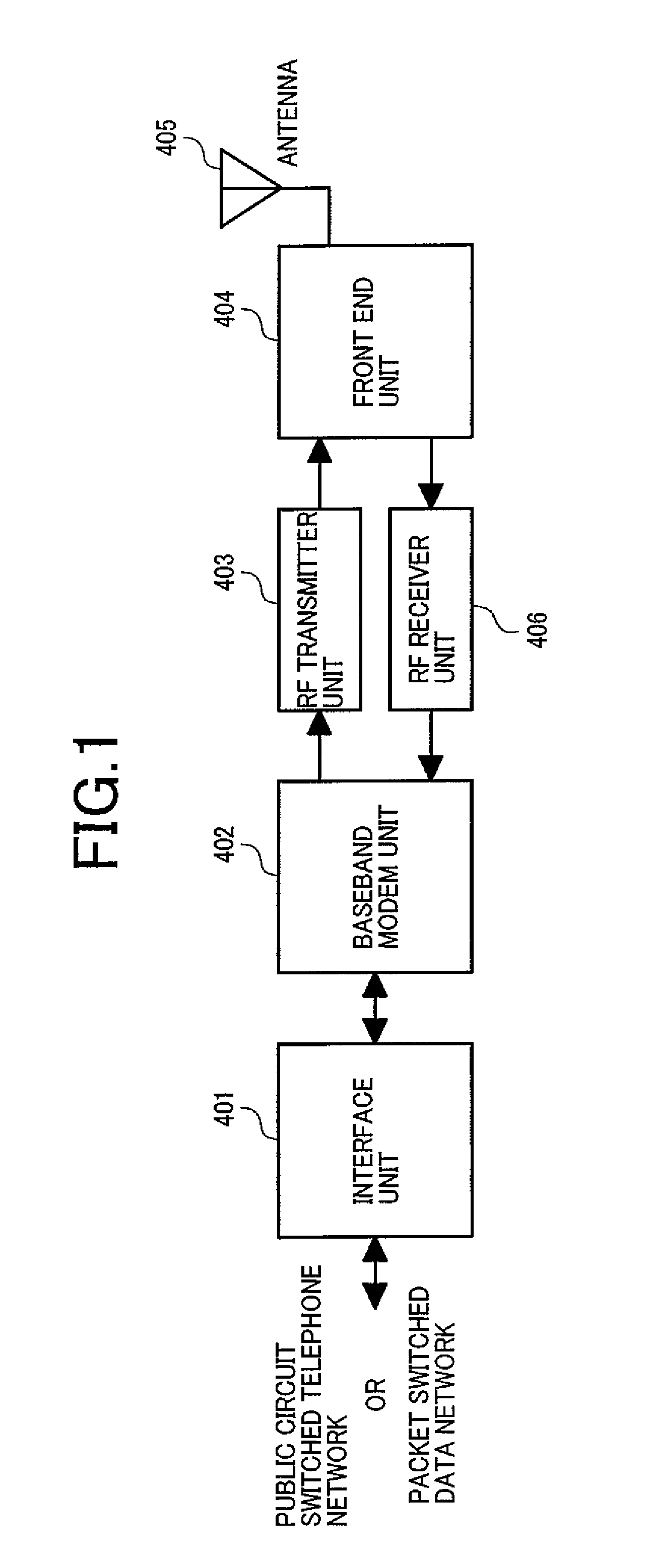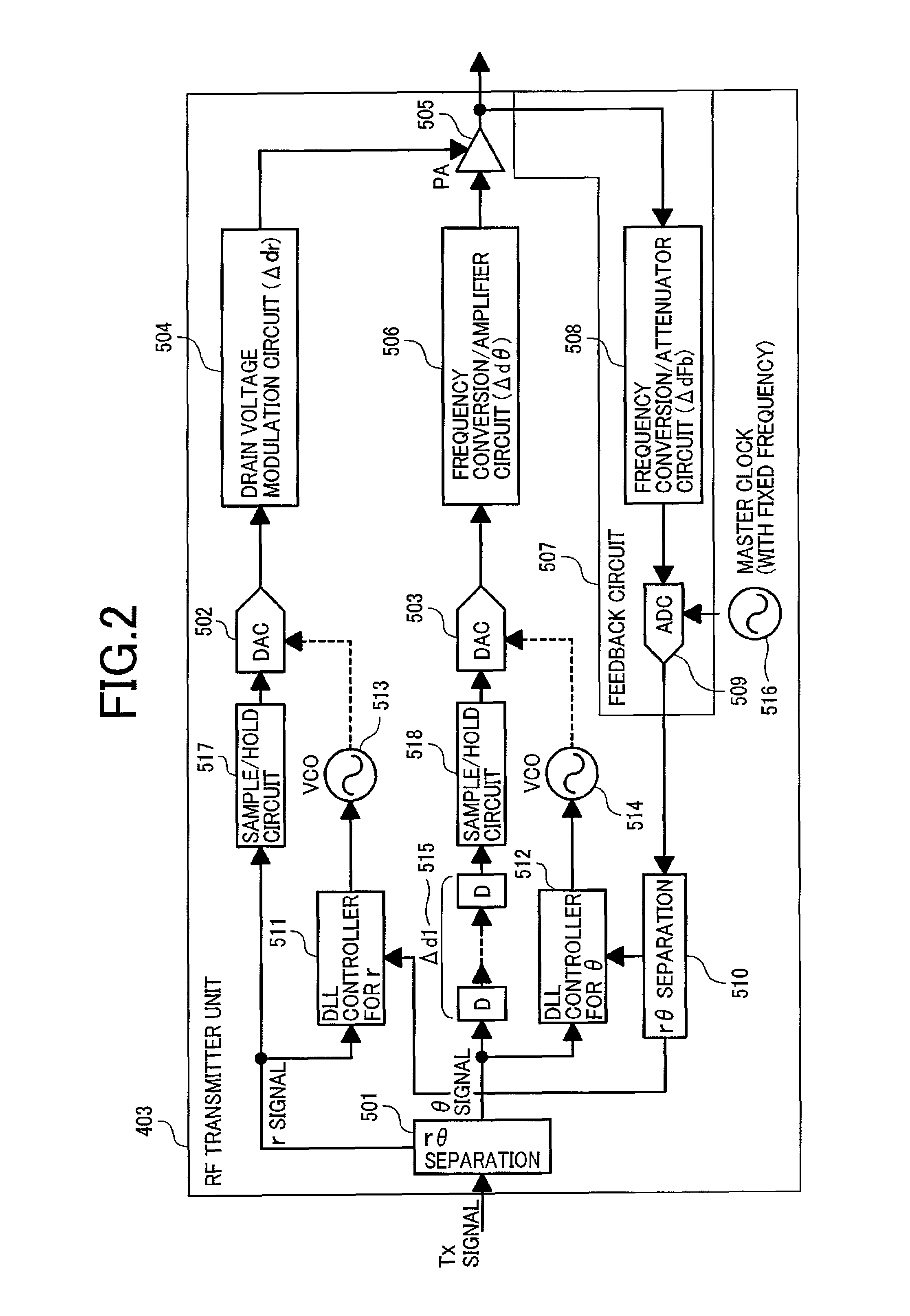Timing adjustment method for wireless communication apparatus
a wireless communication and timing adjustment technology, applied in the field of wireless transmitter/receiver, can solve the problems of signal quality degradation, low quality, and variation in delay amount, and achieve the effects of improving spurious output characteristics, improving quality, and simple structur
- Summary
- Abstract
- Description
- Claims
- Application Information
AI Technical Summary
Benefits of technology
Problems solved by technology
Method used
Image
Examples
first embodiment
FIG. 2 is a block diagram showing the structure of the RF transmitter unit 403 according to this invention.
A transmission signal inputted from the baseband unit 402 is separated into an r (amplitude) component and a θ(phase) component by an rθ separation unit 501. The r component and the θ component are converted into analog signals in digital-to-analog converters (DAC) 502 and 503, respectively. The r signal is converted by a drain voltage modulation unit 504 into a signal to control the supply voltage (drain voltage) of a power amplifier (PA) 505. The converted signal is inputted to a supply terminal of the power amplifier 505, with the result that the envelope curve of an output signal of the power amplifier 505 resembles the waveform of the r signal. The θ signal receives, in a frequency-conversion and amplifier unit 506, frequency conversion to be converted to the RF bandwidth (up conversion) and power amplification. The amplified θ signal is inputted into a signal input termin...
second embodiment
FIG. 5 is a block diagram showing the structure of an RF transmitter unit 403 according to this invention.
In this embodiment, the timing of a feedback signal is adjusted with the timing of transmitting a θ signal as reference and the timing of transmitting an r signal is adjusted based on the thus adjusted timing of the feedback signal. This embodiment shares its basic structure with the first embodiment (FIG. 2) except a timing adjustment circuit of the RF transmitter unit 403. A detailed description on the structure common to this embodiment and the first embodiment will be omitted here.
In this embodiment, the master clock source 516 supplies clock signals to the θ signal DAC 503 whereas the VCO 513 and a VCO 801 supply clock signals to the r signal DAC 502 and the feedback signal ADC 509, respectively. The feedback signal is sampled and digitized by the ADC 509. Then the value of the feedback signal is held by a sample-and-hold circuit 802 to prevent the rθ separation unit 510, w...
third embodiment
FIG. 6 is a block diagram showing the structure of an RF transmitter unit 403 according to this invention.
This embodiment deals with one of adjustment methods to adjust, in a transmitter / receiver that employs other systems than EER and that modulates an I signal and a Q signal through paths of different delay amounts, the delay difference between the two signal paths, in order to show that this invention is applicable also when a wireless transmitter employs other systems than EER. This embodiment shares its structure, except the RF transmitter unit 403, with the first embodiment which is shown in FIG. 1. A detailed description on the structure common to this embodiment and the first embodiment will be omitted here.
An I signal and Q signal received from the baseband unit 402 are converted into analog signals by the DACs 901 and 902, respectively. The analog I and Q signals pass the filters 903 and 904, respectively, before combined with each other through modulation by a orthogonal ...
PUM
 Login to View More
Login to View More Abstract
Description
Claims
Application Information
 Login to View More
Login to View More - R&D
- Intellectual Property
- Life Sciences
- Materials
- Tech Scout
- Unparalleled Data Quality
- Higher Quality Content
- 60% Fewer Hallucinations
Browse by: Latest US Patents, China's latest patents, Technical Efficacy Thesaurus, Application Domain, Technology Topic, Popular Technical Reports.
© 2025 PatSnap. All rights reserved.Legal|Privacy policy|Modern Slavery Act Transparency Statement|Sitemap|About US| Contact US: help@patsnap.com



